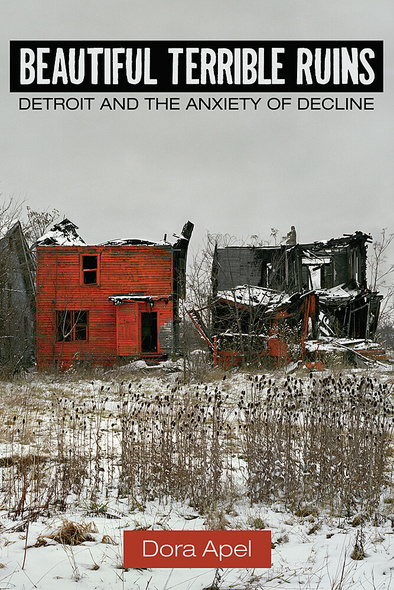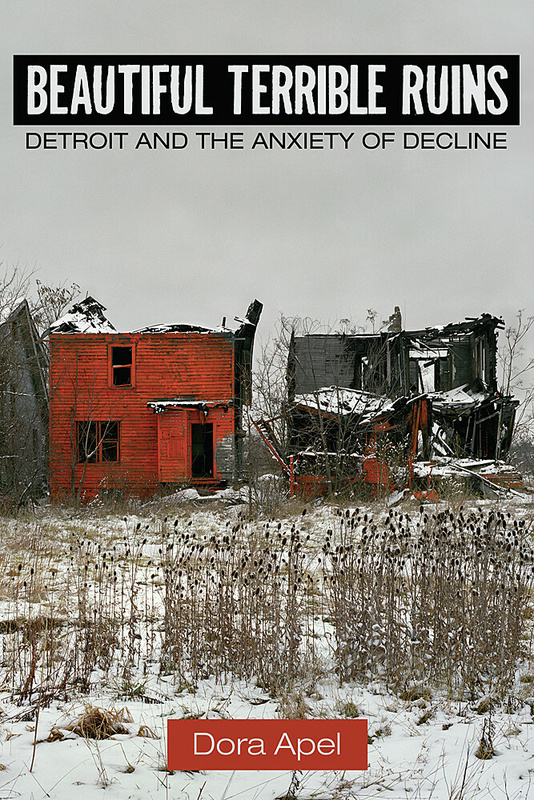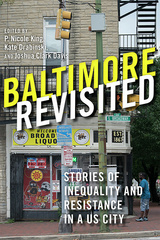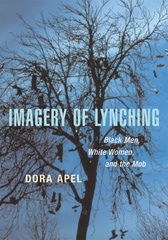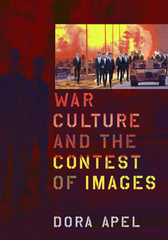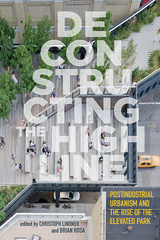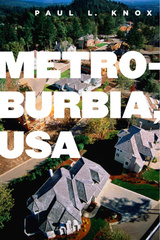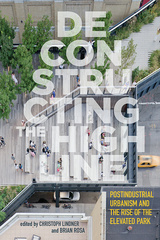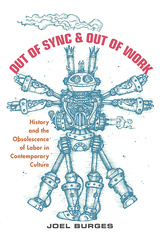Once the manufacturing powerhouse of the nation, Detroit has become emblematic of failing cities everywhere—the paradigmatic city of ruins—and the epicenter of an explosive growth in images of urban decay. In Beautiful Terrible Ruins, art historian Dora Apel explores a wide array of these images, ranging from photography, advertising, and television, to documentaries, video games, and zombie and disaster films.
Apel shows how Detroit has become pivotal to an expanding network of ruin imagery, imagery ultimately driven by a pervasive and growing cultural pessimism, a loss of faith in progress, and a deepening fear that worse times are coming. The images of Detroit’s decay speak to the overarching anxieties of our era: increasing poverty, declining wages and social services, inadequate health care, unemployment, homelessness, and ecological disaster—in short, the failure of capitalism. Apel reveals how, through the aesthetic distancing of representation, the haunted beauty and fascination of ruin imagery, embodied by Detroit’s abandoned downtown skyscrapers, empty urban spaces, decaying factories, and derelict neighborhoods help us to cope with our fears. But Apel warns that these images, while pleasurable, have little explanatory power, lulling us into seeing Detroit’s deterioration as either inevitable or the city’s own fault, and absolving the real agents of decline—corporate disinvestment and globalization. Beautiful Terrible Ruins helps us understand the ways that the pleasure and the horror of urban decay hold us in thrall.
Writing against the genre of ruin porn, Dora Apel's wonderful Beautiful Terrible Ruins reveals the way decay is inbuilt into capitalism at its creation. An excellent and penetrating study.
In Beautiful Terrible Ruins: Detroit and the Anxiety of Decline, Dora Apel goes on the offensive against the myriad myths and delusions peddled about the Motor City; not only that, she rebuffs the blame and shame that have traditionally been directed at the Detroit citizenry, and redirects our attention to the corporations and bureaucrats who have abandoned it. The result is a work that seems to invigorate a depressed debate and ask timely questions about social values in America and the world it influences.
In her thoughtful and riveting take on the decline of Detroit, Dora Apel makes the case that 'ruin porn' images of urban decay say less about a specific city than about the grinding forces of globalism and political abandonment.
In the early twentieth century, Detroit was defined by Charles Sheeler's photos of the River Rouge plant and Diego Rivera's murals of work. Today, the hulking ruins of old industrial buildings and empty skyscrapers symbolize the city. In this provocative analysis, informed by urban geography, political economy, and art history, Dora Apel reflects on what images of ruined Detroit teach us about the city, popular culture, and American capitalism.
'The borders between art, media, advertising, and popular culture have become increasingly permeable,' Apel writes, 'as visual imagery easily ranges across these formats and as people produce their own imagery on websites and social media.' And the aestheticized ruination of Detroit feeds into a more widespread (even global) 'anxiety of decline' expressed in post-apocalyptic videogame scenarios, survivalist television programs, zombie movies, and so on ... Much of the imagery analyzed in Beautiful Terrible Ruins seems to play right along with that social vision. The nicely composed photographs of crumbling buildings are usually empty of any human presence, while horror movies fill their urban landscapes with the hungry undead - the shape of dreaded things to come.
Dora Apel's multi-layered, thought-provoking account of the decline of Detroit and our visual perception of that decline uses Detroit as a case study to explore the anxiety brought by the repeated and continual emphasis on ruin imagery. An eloquent examination of the aesthetics of decay, the charismatic appeal of both the beautiful and the repulsive, drives the book.
Bringing her usual due diligence to bear, Apel digs deep, tracing the roots historically, culturally, and politically of the West's fascination with ruination and its import for today ... Essential reading.
Wayne State prof looks behind the fascination of Detroit's ruins: the new pornographers' by Lee DeVito
Read the full interview (http://bit.ly/1FNfkIi)
What is refreshing about Apel's approach is that her analysis reaches far beyond the spectacle of abandonment and decay to address the forces behind urban decline. In the process, she delivers a powerful critique of the role of corporate disinvestment and neoliberal globalization in ruining cities.
Apel again captivates with her incisive reading of cultural production.
A provocative and challenging book … Recommended. General readers, upper-division undergraduate students, graduate students, and research faculty.
Apel mounts a scathing critique of the dominant narrative [of Detroit in Beautiful Terrible Ruins].
Beautiful Terrible Ruins is a fascinating book. Apel makes a powerful statement about how we need to look more closely at our own ma- terial culture, especially as it is expressed in visual imagery and in the built environment itself in order to better interpret our history. As Apel aptly com- ments, 'to look at Detroit’s beautiful terrible ruins and talk about its decline is talk about everything that is wrong with global capitalism today.'’
Writing against the genre of ruin porn, Dora Apel's wonderful Beautiful Terrible Ruins reveals the way decay is inbuilt into capitalism at its creation. An excellent and penetrating study.
In Beautiful Terrible Ruins: Detroit and the Anxiety of Decline, Dora Apel goes on the offensive against the myriad myths and delusions peddled about the Motor City; not only that, she rebuffs the blame and shame that have traditionally been directed at the Detroit citizenry, and redirects our attention to the corporations and bureaucrats who have abandoned it. The result is a work that seems to invigorate a depressed debate and ask timely questions about social values in America and the world it influences.
In her thoughtful and riveting take on the decline of Detroit, Dora Apel makes the case that 'ruin porn' images of urban decay say less about a specific city than about the grinding forces of globalism and political abandonment.
In the early twentieth century, Detroit was defined by Charles Sheeler's photos of the River Rouge plant and Diego Rivera's murals of work. Today, the hulking ruins of old industrial buildings and empty skyscrapers symbolize the city. In this provocative analysis, informed by urban geography, political economy, and art history, Dora Apel reflects on what images of ruined Detroit teach us about the city, popular culture, and American capitalism.
Bringing her usual due diligence to bear, Apel digs deep, tracing the roots historically, culturally, and politically of the West's fascination with ruination and its import for today ... Essential reading.
'The borders between art, media, advertising, and popular culture have become increasingly permeable,' Apel writes, 'as visual imagery easily ranges across these formats and as people produce their own imagery on websites and social media.' And the aestheticized ruination of Detroit feeds into a more widespread (even global) 'anxiety of decline' expressed in post-apocalyptic videogame scenarios, survivalist television programs, zombie movies, and so on ... Much of the imagery analyzed in Beautiful Terrible Ruins seems to play right along with that social vision. The nicely composed photographs of crumbling buildings are usually empty of any human presence, while horror movies fill their urban landscapes with the hungry undead - the shape of dreaded things to come.
Dora Apel's multi-layered, thought-provoking account of the decline of Detroit and our visual perception of that decline uses Detroit as a case study to explore the anxiety brought by the repeated and continual emphasis on ruin imagery. An eloquent examination of the aesthetics of decay, the charismatic appeal of both the beautiful and the repulsive, drives the book.
What is refreshing about Apel's approach is that her analysis reaches far beyond the spectacle of abandonment and decay to address the forces behind urban decline. In the process, she delivers a powerful critique of the role of corporate disinvestment and neoliberal globalization in ruining cities.
Wayne State prof looks behind the fascination of Detroit's ruins: the new pornographers' by Lee DeVito
Read the full interview (http://bit.ly/1FNfkIi)
Apel again captivates with her incisive reading of cultural production.
A provocative and challenging book … Recommended. General readers, upper-division undergraduate students, graduate students, and research faculty.
Apel mounts a scathing critique of the dominant narrative [of Detroit in Beautiful Terrible Ruins].
Beautiful Terrible Ruins is a fascinating book. Apel makes a powerful statement about how we need to look more closely at our own ma- terial culture, especially as it is expressed in visual imagery and in the built environment itself in order to better interpret our history. As Apel aptly com- ments, 'to look at Detroit’s beautiful terrible ruins and talk about its decline is talk about everything that is wrong with global capitalism today.'’
DORA APEL is a professor of art history and visual culture and W. Hawkins Ferry Endowed Chair in Modern and Contemporary Art History at Wayne State University in Detroit. She is the author of War Culture and the Contest of Images (Rutgers University Press).
List of Illustrations
Acknowledgments
Introduction: Modernity in Ruins
1 Ruin Terrors and Pleasures
2 Fear and Longing in Detroit
3 Urban Exploration: Beauty in Decay
4 Detroit Ruin Images: Where Are the People?
5 Looking for Signs of Resurrection
6 Surviving in the Post-Apocalyptic Landscape
Conclusion: Your Town Tomorrow
Notes
Selected Bibliography
Index

